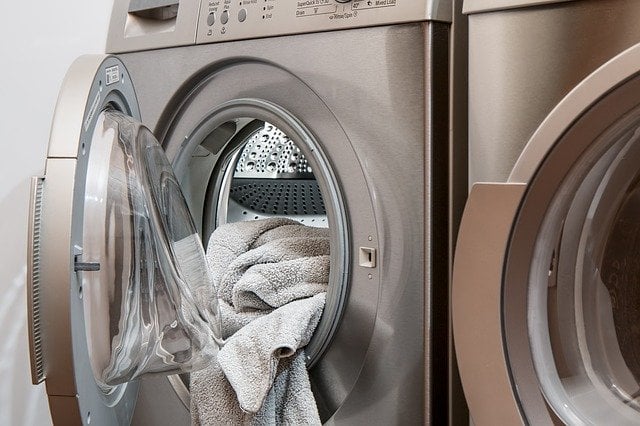
The prospect of reopening schools under the new CDC guidelines in response to COVID-19 can be overwhelming for facilities and administrative personnel. In addition to increased surface cleaning, hand washing, maintaining six feet between classroom desks, and wearing face masks, the schools are faced with making decisions on how to best operate their HVAC equipment. As much as the world is trying to help them with these decisions, the HVAC guidelines from the CDC and ASHRAE are all encompassing; it is difficult to identify which measures are applicable and even more difficult to prioritize the measures under a school’s constrained budget. This may overburden an already burdened school facilitator.
Assessing your HVAC system can be addressed best by understanding the overall goal of the CDC recommendations and analyzing the current state of the HVAC systems you have in your buildings. I’m going to attempt to shed some light on these items so that modifications can be implemented expeditiously and judiciously.
High-Level Summary of HVAC Guidelines
When it comes to HVAC modifications for COVID, what we’re really talking about is ventilation and filtration. ASHRAE’s official statement is “Transmission of SARS-CoV-2 through the air is sufficiently likely that airborne exposure to the virus should be controlled. Ventilation and filtration provided by heating, ventilating, and air-conditioning systems can reduce the airborne concentration of SARS-CoV-2 and thus the risk of transmission through the air.” This means we want to ensure there is plenty of uncontaminated outside air coming into our spaces and any recirculated air is cleaned before being supplied back to a space. At the same time, since we may be asking the air handling equipment to do more work (heating and/or cooling more outside air and pushing air through thicker filters) we need to verify the air handling equipment can handle the additional temperature differential and pressure drop So where do we start?
How To Assess Your HVAC System
We start with the following necessary steps to assess the existing conditions of your HVAC system and determine implementation steps:
Step 1: Step 1 must be to ensure the HVAC equipment is providing the ventilation and exhaust air that the unit was designed to provide, and the supply air is uncontaminated. This means checking each and every air handling unit and exhaust fan to make sure the outside/exhaust air ductwork is not blocked, the air intake is not in a location that takes in contaminated air, and the control dampers are working and controlled properly.* Many older units, especially classroom unit ventilators, may have blocked air intake because occupants have been uncomfortable, buildings may have shifted and compromised ductwork, or fans have been shut off due to drafts or improperly controlled supply air temperature. Newer units with Building Automation Systems (BAS) should also be checked for proper control sequences (ensure dampers are programmed to open and close). This work can be done by knowledgeable facilities personnel or mechanical contractors, controls contractors, or commissioning agents.
*When I use the term ‘air handling unit’ I mean every unit that is bringing in outside air and conditioning it. That includes rooftop units, traditional air handling units, energy recovery units, and unit ventilators.
Step 2: Ensure temperature control valves on all air handling units operate properly so that correct supply air temperatures can be maintained. Many older units’ valves do not work properly, and the supply air temperature is uncomfortably hot or cold, leading to occupants turning off the unit or blocking the outside air intakes. This work can be done by knowledgeable facilities personnel or mechanical contractors, controls contractors, or commissioning agents.
Step 3: Hire a Test and Balance company to measure the outside air intake for each space. This is well worth the money. Additionally, find the design conditions and specifications for each air handling unit or consult with an engineer or commissioning agent to calculate those values. Using the map of each room’s airflow and unit capacity, one can determine how much fresh air is being introduced to the room, how much fresh air the unit is capable of providing the room (can it be increased?), and the pressure dynamics between spaces (where is my ‘used’ air going?). This analysis will inform you how much modification is required for your HVAC system.
Necessary HVAC Modifications
The next steps are implementation of air system modifications.
Step 4: Bring existing units into good working order based on steps 1 and 2 (i.e. ensure dampers and valves are operating correctly and air intake and exhaust are flowing freely).
Step 5: From the airflow assessment in Step 3 and with the assistance of a design engineer or commissioning agent, determine if the outside air intake (ventilation air) meets ASHRAE 62.1-2019 standards per space type. (Note: some entities are recommending exceeding ASHRAE 62.1 standards, but the CDC and ASHRAE COVID-19 guidelines do not explicitly state this at this time.)
- If there is insufficient ventilation air, you have some choices:
- Replace the air handling unit with one designed to provide more ventilation.
- Reduce the number of occupants within the space so that the space meets or exceeds the ASHRAE 62.1 ventilation requirements.
- Install stand-alone, recirculating HEPA filters in the space.
- If the HVAC system can provide sufficient ventilation air, have the TAB contractor balance all the HVAC systems (air handlers, VAV boxes, dampers, and exhaust fans) so that interactive spaces are properly pressurized and each space is providing the required volume of ventilation air.
Step 6: Disable demand control ventilation (CO2 based control). This can be done by knowledgeable facilities personnel or your controls contractor.
Step 7: Program the BAS to operate the ventilation system with maximum outside air intake during the occupied hours and 2 hours before occupants arrive and 2 hours after occupants leave the building. This will flush the building. This can be done by knowledgeable facilities personnel or your controls contractor.
Additional Measures
So far, these steps have brought your building up to proper working order and you have ensured the air handling equipment is providing sufficient ventilation air and that they have the capacity and ability to condition this air to comfortable temperatures. The following measures will increase the systems’ level of cleanliness, and include crucial considerations and recommendations to aid in your decision-making process:
- Increased Air Handler Filtration
Typically, air handlers have a filter with a rating of between MERV 6 and MERV8. To address COVID, ASHRAE recommends a minimum MERV 13, preferably a MERV 14.
Please consider two things before investing in these filters:
- Your existing equipment is designed to provide a certain airflow at a certain pressure drop and handle a certain width filter. MERV 13 or 14 filters are thicker than MERV 6 or 8 which may not fit in your unit and/or could decrease your airflow rate if the pressure drop is higher than the design filters. We recommend checking with a design engineer, commissioning agent or mechanical contractor to pinpoint the appropriate filter that will not reduce your airflow and will fit in your unit.
- Please consider the required maintenance when you make your budget – filter changes will be needed every six months and these filters are not inexpensive.
- UV-C light
Ultraviolet germicidal irradiation (UVGI) uses short-wave ultraviolet (UVC) energy to inactivate viral, bacterial, and fungal organisms so they are unable to replicate and potentially cause disease. Especially for spaces that do not have sufficient outside air volume, UVC lights can be placed in the return ductwork of an air handling unit. This approach will require an engineer or commissioning agent to design the installation as you will need sufficient length of light and the proper airflow velocity in order for this equipment to be effective. As with the MERV filters, replacement of these lights will need to be included in the school budgets. Typically, UV lamps reduce their light wave intensity to about 60% of a new UV lamp after approximately 9,000 hours of use. - Stand-alone HEPA Filters
HEPA stands for a "high efficiency particulate air” filter. According to the Dept. of Energy, this “type of air filter can theoretically remove at least 99.97% of dust, pollen, mold, bacteria, and any airborne particles with a size of 0.3 microns (µm). The diameter specification of 0.3 microns responds to the worst case; the most penetrating particle size (MPPS). Particles that are larger or smaller are trapped with even higher efficiency. Using the worst case particle size results in the worst case efficiency rating (i.e. 99.97% or better for all particle sizes.” Placing a properly-sized, stand-alone HEPA filter unit within a space will help remove any airborne particulates of concern. This can make up for poor air circulation within certain spaces, rooms receiving ‘used’ air from other spaces, or rooms that could contain COVID patients, like the nurse’s office. Not to sound like a broken record, but the cost of these filters is also not insignificant and filter replacements should be included in the annual school budget. - Increase Relative Humidity
In cold climates such as Vermont, our winter relative humidity is quite low. When the ventilation air is then heated, the relative humidity drops even lower. “Such a drop in humidity makes it easier for airborne viral particles to travel… [Additionally]… the hair-like organelles outside of cells that line the body’s airways, called cilia, do not function as well in dry conditions — they cannot expel viral particles as well as they otherwise would”. This scientific fact has made ASHRAE recommend maintaining indoor relative humidity levels of 40-60%. While this is better for containing the virus between people, such high levels of indoor humidity can create mold growth inside the building and cause their own indoor air quality issues. If you’re interested in exploring this path, we strongly recommend involving a design engineer. We also strongly advise that a maintenance plan be put in place to clean the humidifiers and change filters regularly. Dirty reservoirs and filters in humidifiers can quickly breed bacteria and mold. - Energy Recovery Wheel
A heat wheel in an energy recovery unit spins through both the exhausted air and the fresh outside air. This connection introduces the potential for transferring virus particles from the returned air to the incoming air. The sticky point is that the heating and cooling capacity of the HVAC system is dependent on the thermal interaction of this wheel (the return air pre-conditions the incoming air so that there is less of a heating or cooling load on the system); without this wheel you do not have the heating or cooling capacity to provide the appropriate supply air temperature to the building. For this reason, and because the fresh air intake will dilute the virus particles, ASHRAE does not recommend disabling the heat wheel but it is something you could explore with a design engineer.
Hopefully, these steps help guide you as you assess the measures that will help you open your building responsibly. While recommendations seem to quickly change these days as information and data become available, we believe the guidelines outlined here are based on solid science and will remain appropriate for the foreseeable future.


